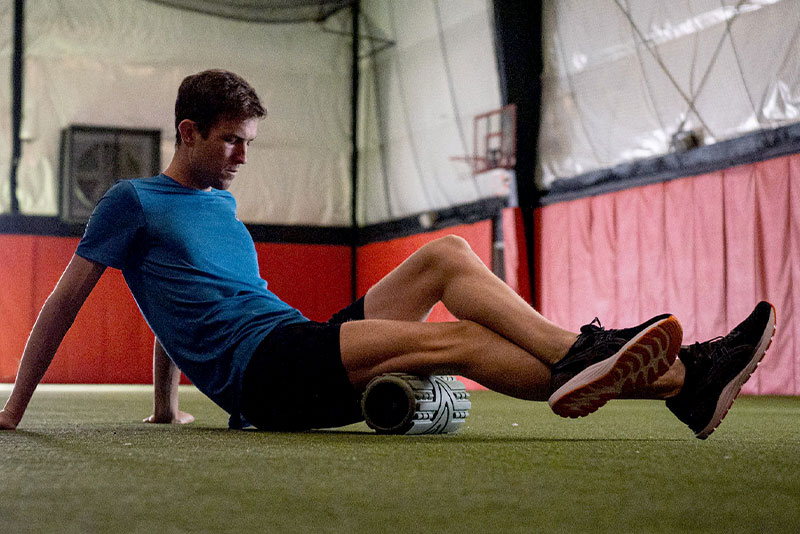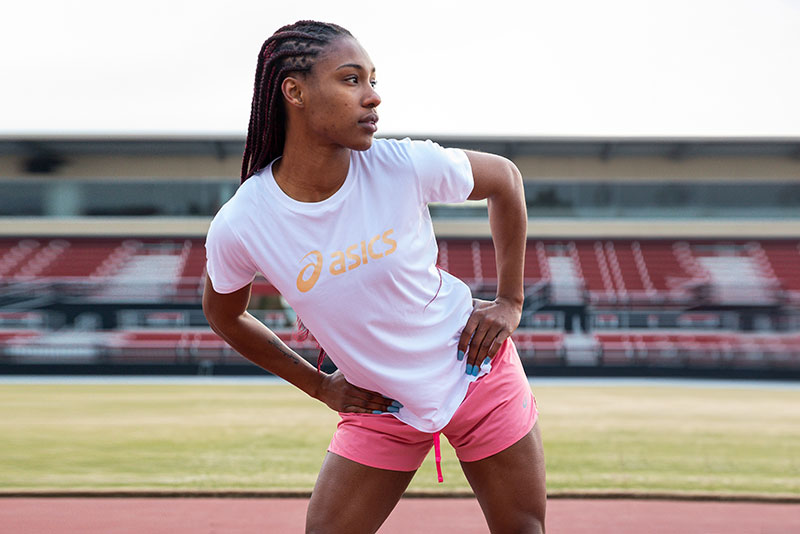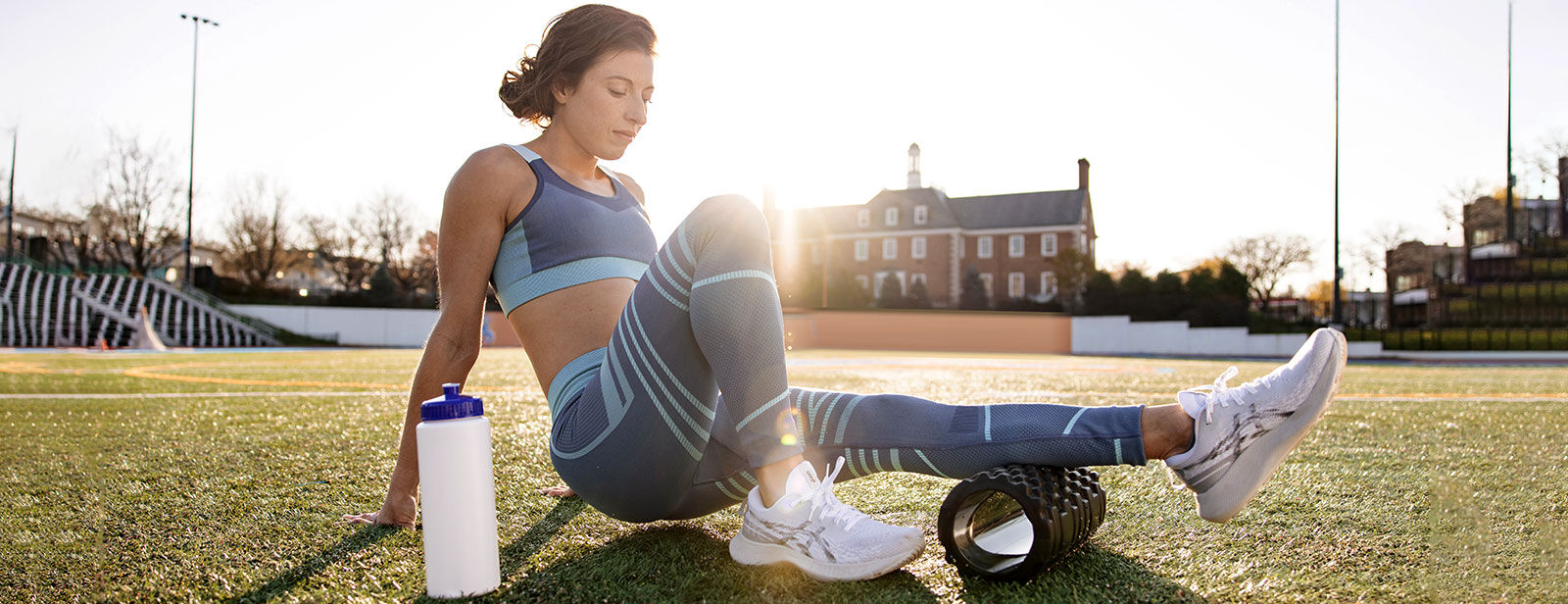Read on to learn what foam rolling is and why you should add it to your post-run routine. We'll also explain how to choose a foam roller and give you some exercises you can start using today.
What Is Foam Rolling?
Foam rolling is also called self-myofascial release because you use a cylinder made of rigid foam to help break down adhesions that can form in the fascia — or fibrous connective tissue — that surrounds your muscles. Adhesions can weaken your muscles and lead to injury and imbalances. When you use a foam roller, you're massaging your muscles to help keep them flexible.
Why Is It Good to Foam Roll After a Run?
Using a foam roller during your cooldown accelerates your recovery process. It helps:
- Improve your performance
- Reduce overuse injuries
- Make you feel better while running
How does foam rolling result in these benefits? Here's the science behind it. Foam rolling after a run:
- Delivers more oxygen to sore muscles by stimulating blood flow
- Improves circulation of blood to your extremities
- Relaxes your muscles to relieve fatigue and tightness
- Helps improve your range of motion
- Enhances your immune system
- Helps remove muscle adhesions or scar tissue that can limit your mobility
- Reduces inflammation and stress hormones

How to Choose a Foam Roller
Your foam roller does not have to be expensive or fancy to be effective. Choose a simple and affordable roller made of fairly rigid foam material, so it holds its shape as you roll over it. Smooth foam rollers are good for all post-run exercises, and a textured roller will give you an even deeper massage. A roller with a hard plastic core is more durable and will keep its shape better over time.
Foam Roller Techniques for Your Post Run
Using a foam roller after every run can help prevent soreness and keep your muscles from tightening up. Spend 30 to 60 seconds and no more than two minutes on each muscle group, and use slow, deliberate, and controlled rolling.
Foam rolling will sometimes hurt, especially when you're breaking down myofascial adhesions. But if you experience a stabbing pain, change positions and roll more gently, working your way up to more aggressive rolling.
Be sure not to roll over a bone or joint, and don't use a foam roller on an injured muscle. The muscle is inflamed because it's damaged, and rolling can cause further inflammation.
Try adding the following foam roller techniques to your post-run routine. Whenever you find a sore spot or a tight muscle, hold the roller in that position for 30 seconds or so, until your muscle relaxes.

Hamstrings
Your hamstrings are the very large muscles of the back of your thighs, and they're important to runners. Because of their size, it's more difficult to get a deeper massage, but you can try using a textured roller or crossing one leg over the other as you follow these steps:
- While sitting on the floor, place the foam roller under your legs above the back of your knees.
- Relax your legs and feet, and place your hands on the floor behind you for support.
- Roll back and forth over the roller, from the back of your knees to the beginning of your glutes.
Glutes
Your glutes — or butt muscles — are also a large muscle group. Using the edge of your foam roller can help you get a deeper massage for your glutes. You'll be rolling one glute at a time:
- Sit on the foam roller with your left glute, put your left hand behind you for support, and use the other hand to hold the ankle of your right leg as you cross it over your right knee.
- Tilt toward your bent leg, and slowly roll from the bottom to the top of your glute muscle.
- Repeat with the other side.
Calves
You can be the least aggressive with your calves, which are the muscles of the back of your lower leg. You can roll both calves at once or one at a time. For added pressure, cross one leg on top of the other.
- Sit on the floor and place the roller under your legs just above the ankles.
- Relax your legs and feet, and place your hands on the floor behind you for support.
- Roll back and forth over the roller, from your ankles to the back of your knees.
Quadriceps
These are the muscles at the front of your upper thighs. You can vary the following rolling technique by changing your position to target your inner and outer quads:
- Place the foam roller under your thighs as you're lying face down on the floor, resting on your elbows for support.
- Roll back and forth, from the top of your quads to the top of your knee.
Hips and Iliotibial band
The hips are a pivotal muscle group for runners, and tight hips can lead to injury and reduced mobility. The iliotibial band — or IT band — runs from your hip down the side of your thigh. It's important to keep it loose to increase hip flexibility and protect your knee from injury. Using a foam roller on these two areas may be painful, so go slowly:
- Lay on your side and place the foam roller under one hip, propping yourself on your elbow and using the opposite hand on the floor for support.
- Roll back and forth, from below your hip bone to just above your knee. This will be a small movement.
- Repeat with your other side.
Lower Back
Foam rolling your lower back will relieve tightness and pain that can build up for runners. For this exercise, you'll be rolling your back from side to side over the roller instead of the roller moving back and forth:
- Laying on your back, bring your knees to your chest and place the roller underneath your lower back, but don't prop yourself up on the roller.
- Roll slowly to your left so that your lower back is rolling across the roller.
- Hold for a few seconds, then roll to the other side. Continue rolling from one side to the other.
